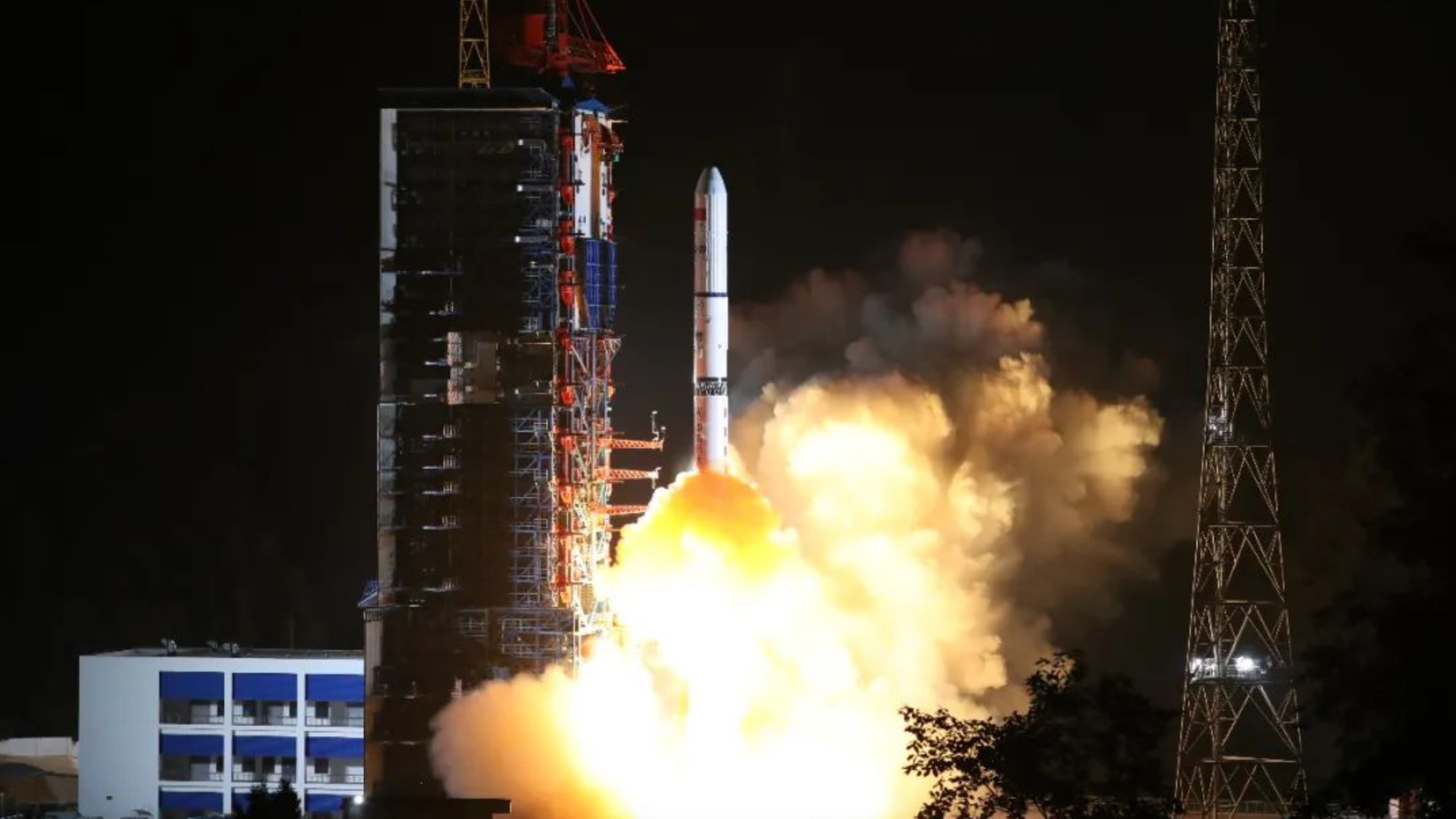China continues remote-sensing buildup with new launch of Yaogan satellites (video)
The Oct. 23 launch carried the fourth set of Yaogan 39 triplets inside two months.
China is continuing to launch trios of classified remote-sensing satellites to low Earth orbit.
A Long March 2D rocket lifted off into the night sky above the Xichang Satellite Launch Center in southwest China at 4:03 p.m. EDT on Oct. 23 (2003 GMT; 4:03 a.m. Beijing Time on Oct. 24).
The China Aerospace Science and Technology Corporation (CASC), the country’s state-owned main space contractor, confirmed launch success shortly after liftoff and revealed the previously undeclared payloads to be a new set of Yaogan 39 series satellites.
Related: China launches mysterious new spy satellite

Little is publicly known about the Yaogan satellites. State media outlet China Daily described the spacecraft as remote-sensing satellites tasked with observing, surveying and measuring objects on land or at sea as well as monitoring weather. Western observers believe Yaogan satellites to be for at least partly military purposes. The wider series includes optical, radar and electronic intelligence gathering satellites.
The satellites were made by the China Academy of Space Technology (CAST) in Beijing and the Shanghai Academy of Spaceflight Technology (SAST), both major entities under CASC.
The new group joins three sets of Yaogan 39 triplets launched in August, September and earlier this month. Like the earlier satellites, the new gang entered orbits with an altitude of roughly 307 miles (495 kilometers) and inclined by 35 degrees.
Get the Space.com Newsletter
Breaking space news, the latest updates on rocket launches, skywatching events and more!
CelesTrak has GP data for 5 objects from the launch (2023-163) of a Yaogan-39 triplet atop a Long March-2D rocket from Xichang Satellite Launch Center on Oct 23 at 2003 UTC: https://t.co/eZDYN2C9mW. Data for the launch can be found at: https://t.co/bvLW5KKdF0. pic.twitter.com/P5FNpWqHhbOctober 24, 2023
Each group will pass over the same points above Earth at different times, providing more frequent coverage over areas of interest.
The mission was China's 48th orbital launch of the year.
Join our Space Forums to keep talking space on the latest missions, night sky and more! And if you have a news tip, correction or comment, let us know at: community@space.com.

Andrew is a freelance space journalist with a focus on reporting on China's rapidly growing space sector. He began writing for Space.com in 2019 and writes for SpaceNews, IEEE Spectrum, National Geographic, Sky & Telescope, New Scientist and others. Andrew first caught the space bug when, as a youngster, he saw Voyager images of other worlds in our solar system for the first time. Away from space, Andrew enjoys trail running in the forests of Finland. You can follow him on Twitter @AJ_FI.









